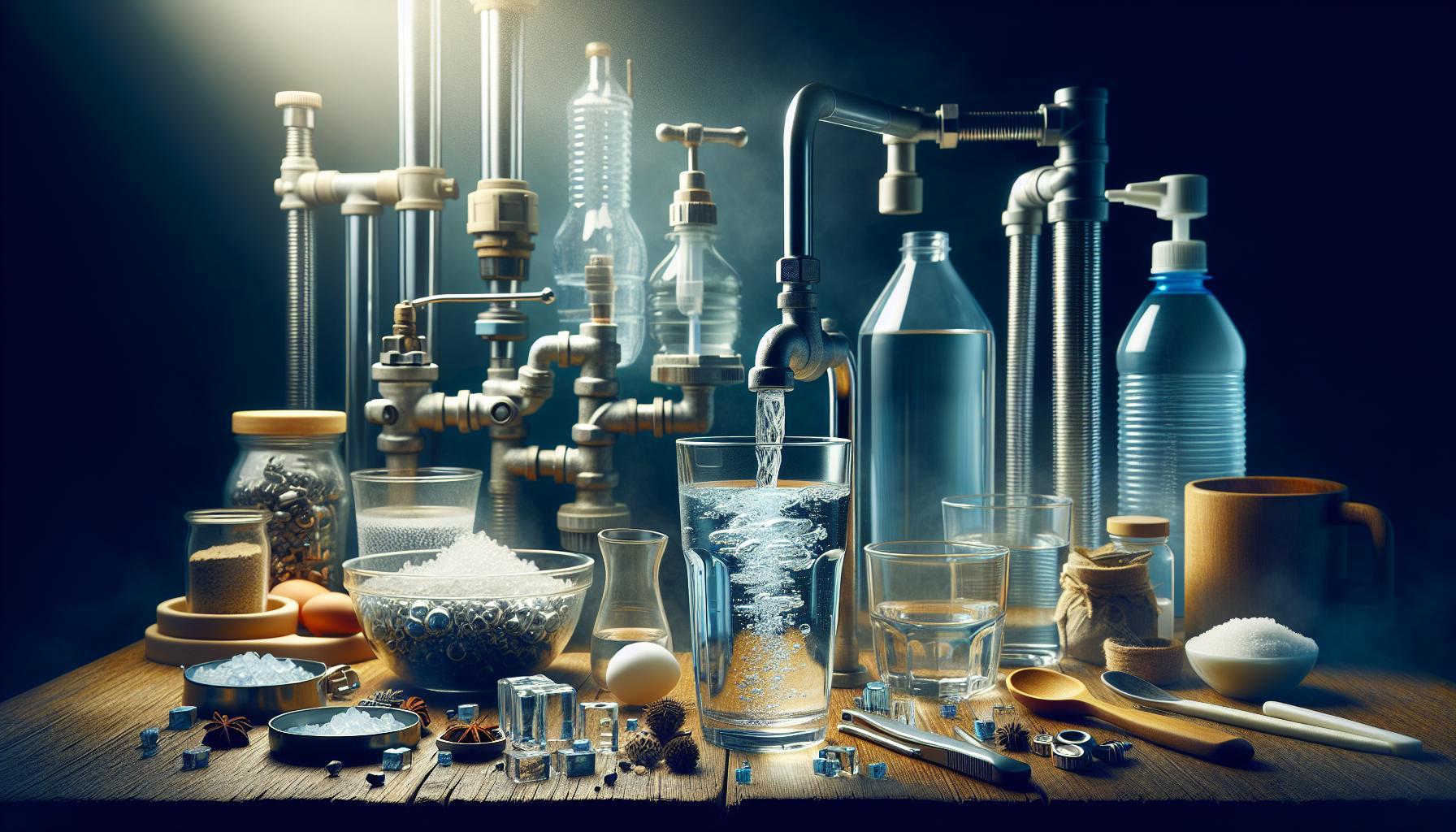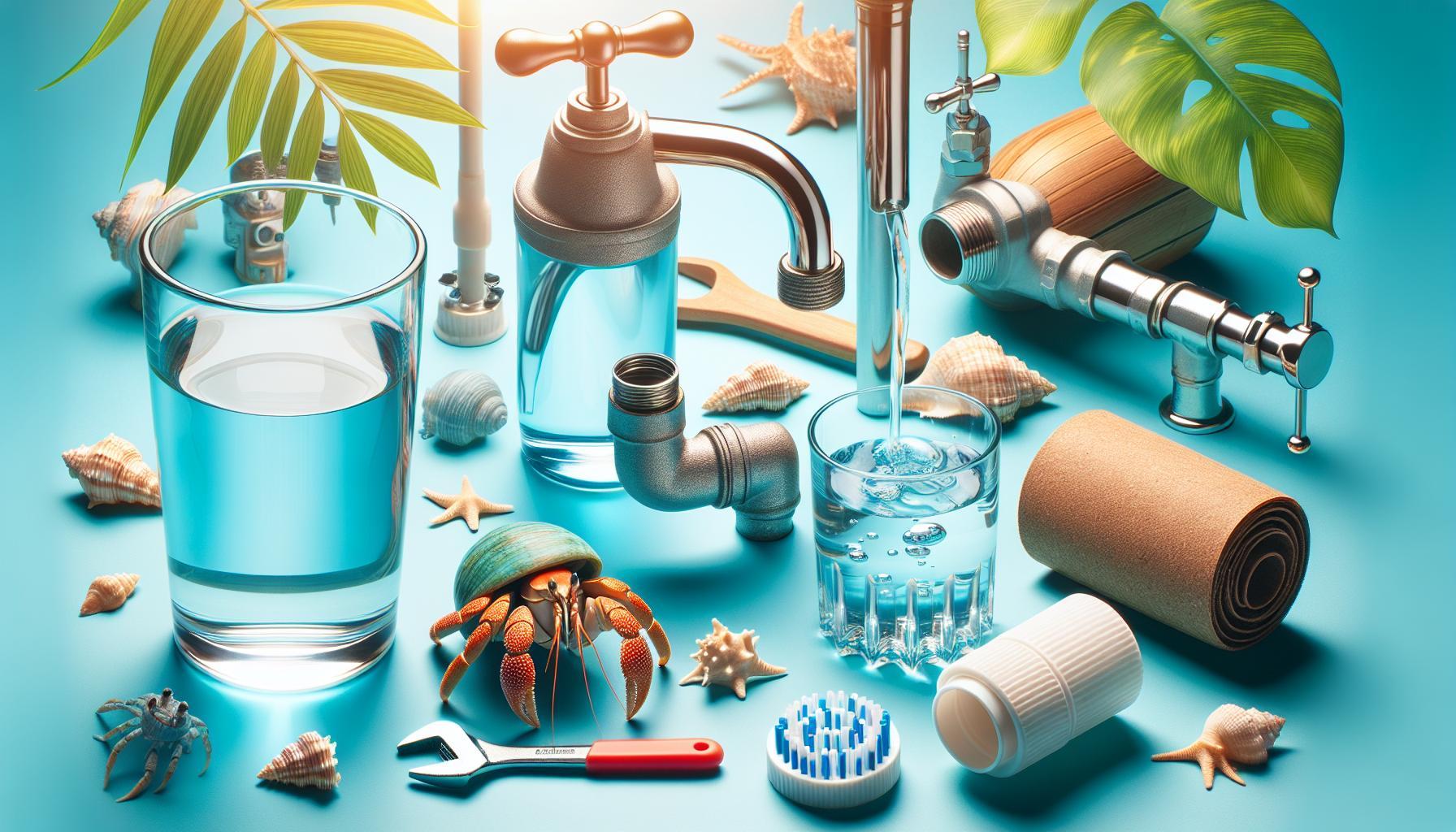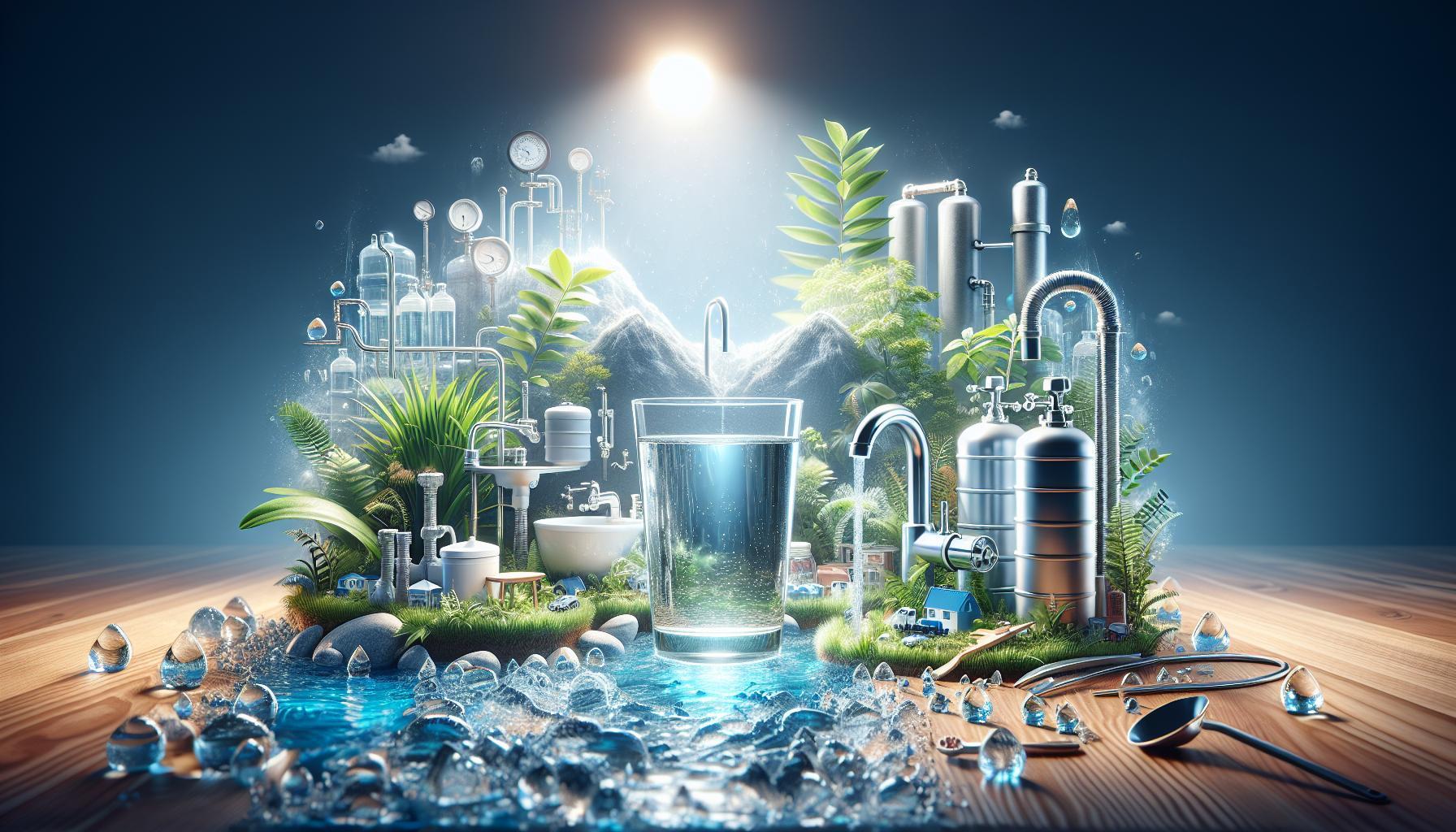Is boiling water an effective way to remove chlorine from your tap water? Understanding this common purification method is essential for ensuring safe drinking water, as chlorine is often used in municipal systems to eliminate harmful bacteria. Let’s explore whether boiling truly eliminates chlorine and what alternatives exist for achieving clean, pure water.
Understanding Chlorine in Drinking Water: Why It’s Used
Chlorine has become a staple in the modern approach to water purification, so much so that its presence in our drinking water is often overlooked. In the United States, for example, approximately 98% of community water systems use chlorine as a disinfectant. This widespread practice raises an important question: *What makes chlorine so vital in ensuring the safety of our drinking water?*
The Role of Chlorine in Water Purification
Chlorine is primarily used in drinking water supplies due to its effectiveness in killing harmful bacteria and viruses. Once chlorine is added to water, it forms hypochlorous acid, which is incredibly effective at neutralizing a wide array of pathogens. The following points illustrate its importance:
- Effective Disinfection: Chlorine is known to significantly reduce the presence of waterborne diseases such as cholera and typhoid fever.
- Residual Protection: Unlike some other disinfectants, chlorine leaves a residual effect in the water. This means it continues to protect the water supply from microbial recontamination as it travels through pipes to your taps.
- Cost-Effective Solution: Chlorination is a relatively inexpensive method for municipalities, making it a practical choice for water treatment facilities.
Environmental and Health Considerations
While chlorine is critical for safe drinking water, it’s essential to consider its concentration and potential byproducts. Chlorination can lead to the formation of disinfection byproducts (DBPs) when chlorine reacts with organic matter in the water. These can have health implications, prompting many individuals to seek methods to remove chlorine from their water.
For those worried about DBPs or chlorine levels, it’s important to understand how various purification methods interact with chlorine. Many ask, *Does boiling water take out chlorine? Purification facts reveal that boiling can evaporate chlorine, but it should not be relied upon as the sole purification method.* Here are some alternatives for those looking to minimize chlorine exposure:
- Activated Carbon Filters: These filters can absorb chlorine and other impurities effectively.
- Reverse Osmosis Systems: Known for their ability to remove a wide array of contaminants, including chlorine.
- Let Water Sit: Allowing water to stand for 24 hours before use can help dissipate chlorine through evaporation.
In conclusion, understanding the use of chlorine in drinking water reveals its dual role as a protector and a concern. While it effectively prevents waterborne illnesses, awareness of its potential side effects can guide choices for safer drinking water.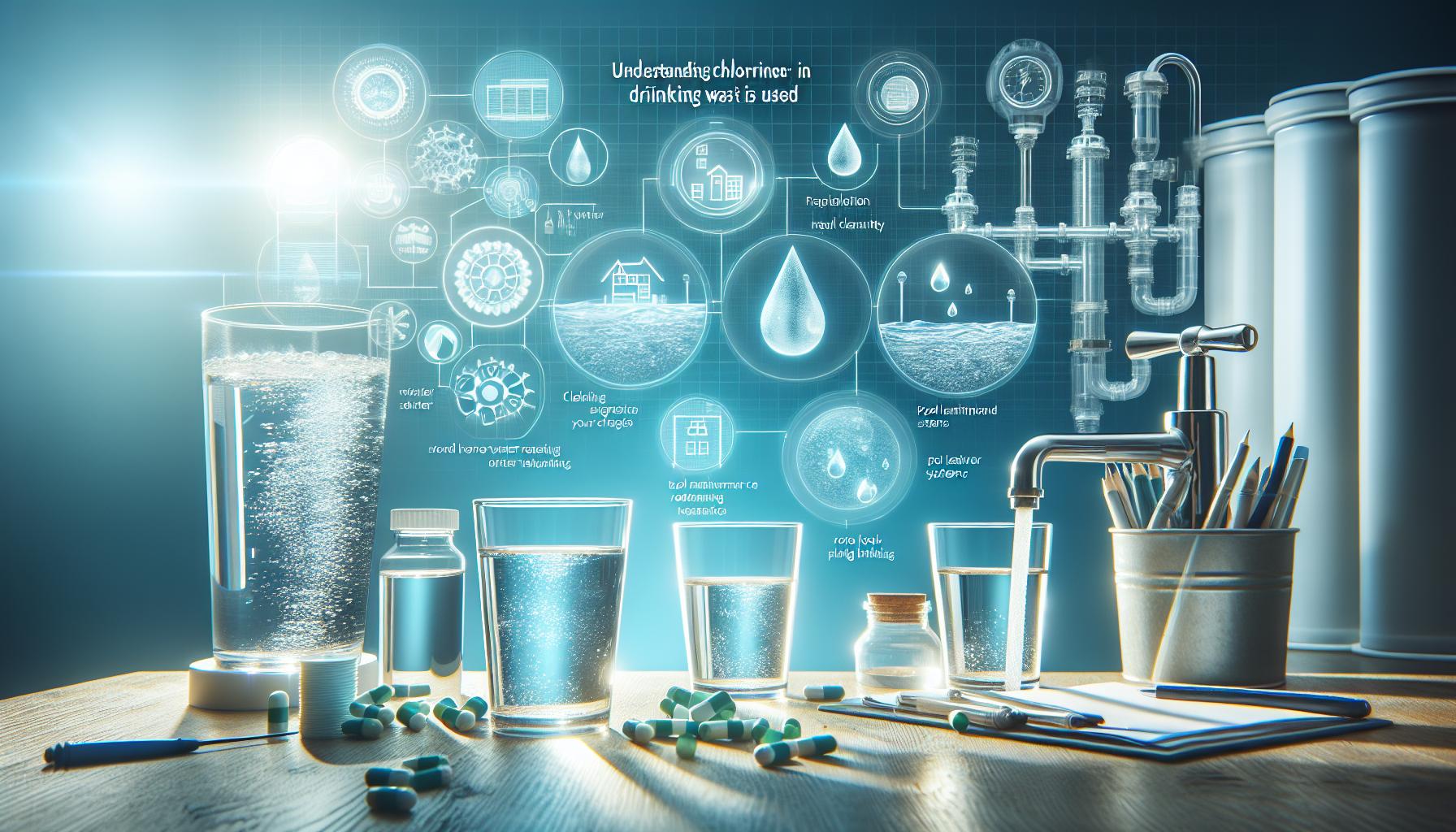
The Science Behind Boiling Water: What Happens to Chlorine?
Understanding the dynamics of boiling water reveals fascinating insights into how our everyday practices can lead to cleaner drinking water. Many people wonder, does boiling water take out chlorine? This question is not just a matter of convenience; it intertwines with the science of water purification and the behavior of chlorine when subjected to heat.
When water is heated to its boiling point, typically around 100°C (212°F), several physical changes occur that affect its composition. Chlorine, commonly used to disinfect municipal water supplies, is known for its volatile nature. At elevated temperatures, chlorine molecules are more likely to escape into the air rather than remain dissolved in the water. As a result, the boiling process effectively reduces the chlorine concentration in the water.
How Chlorine Acts During Boiling
To better understand the effectiveness of boiling in removing chlorine, consider the following key points:
- Evaporation: Chlorine evaporates more quickly than water when heated. This means that a significant portion of the chlorine will leave the water as it boils.
- Concentration: As water boils away, any remaining chlorine becomes more concentrated, leading to a dynamic where some chlorine may linger, but a large portion will have evaporated.
- Boiling Time: The time water is boiled influences chlorine removal; longer boiling times result in more chlorine escaping.
Practical Considerations for Water Purification
While boiling is an effective method for reducing chlorine in water, it is essential to implement it correctly. To maximize the removal of chlorine:
| Action | Details |
|---|---|
| Boil for at least 15 minutes | This duration is generally sufficient for most of the chlorine to evaporate. |
| Allow water to cool | Letting it sit allows any remaining chlorine to dissipate further. |
| Use a lid | Covering the pot while boiling can help trap steam, which may contain volatile chlorine, but it is essential to remove the lid afterward to allow residual chlorine to escape. |
By applying these practical steps, anyone can enhance their water purification efforts at home. While boiling water is a straightforward and effective approach to removing chlorine, understanding the science behind it can lead to more informed choices regarding water consumption and purification methods.
Effective Methods for Removing Chlorine from Your Water
When considering the purity of our drinking water, many people are often surprised to learn that common methods of purification like boiling may not be as effective as they think. While boiling can kill bacteria and other pathogens, it falls short in removing certain chemicals, including chlorine. For those who are sensitive to chlorine’s taste and smell or are concerned about its effects on health, exploring alternative methods for chlorine removal can make a significant difference in water quality.
Filtration Systems
A popular and effective method for eliminating chlorine is utilizing water filtration systems. These systems come in various forms, including:
- Activated Carbon Filters: These are highly recommended as they can efficiently absorb chlorine and its by-products. They are available as pitcher filters, faucet attachments, and even under-sink installations.
- Reverse Osmosis Systems: This advanced filtration method not only removes chlorine but also reduces other contaminants like lead and fluoride. Reverse osmosis systems can be installed at home, providing a continuous supply of purified water.
- Whole House Filters: For comprehensive protection, consider installing a whole house filtration system. These systems treat water at the point of entry, ensuring that every tap in your home dispenses chlorine-free water.
Letting Water Sit
Another simple yet effective method to lower chlorine levels is by allowing water to sit exposed to air. This process, known as “dechlorination,” allows chlorine to evaporate naturally from the water. Here’s how it works:
- Fill a container with tap water and leave it uncovered.
- Let it sit for at least 24 hours to ensure that the chlorine has dissipated.
While this method is easy, it’s best suited for small quantities, as large volumes may take longer to treat.
Using Vitamin C
For those looking for a more innovative solution, using vitamin C is a popular natural method to neutralize chlorine. Ascorbic acid (Vitamin C) effectively removes chlorine when added to your water. Here’s how you can use this method:
- Dissolve a small amount of ascorbic acid powder in water.
- Add this solution to your water, allowing it time to react (usually a few minutes).
This approach is especially useful for treating bathwater or water used for gardening without harming plants, as it neutralizes chlorine almost instantly.
Summary Table of Chlorine Removal Methods
| Method | Effectiveness | Considerations |
|---|---|---|
| Activated Carbon Filters | High | Regular replacement of filters required |
| Reverse Osmosis | Very High | Higher initial cost, complexity |
| Letting Water Sit | Moderate | Time-consuming for large amounts |
| Vitamin C | High | Requires purchase of powder |
By employing supply, you can ensure that your drinking, cooking, and bathing water are safer and more pleasant. Each technique has its benefits and drawbacks, but the right choice will enhance your overall water quality, proving that understanding the purification facts is vital for a healthier lifestyle.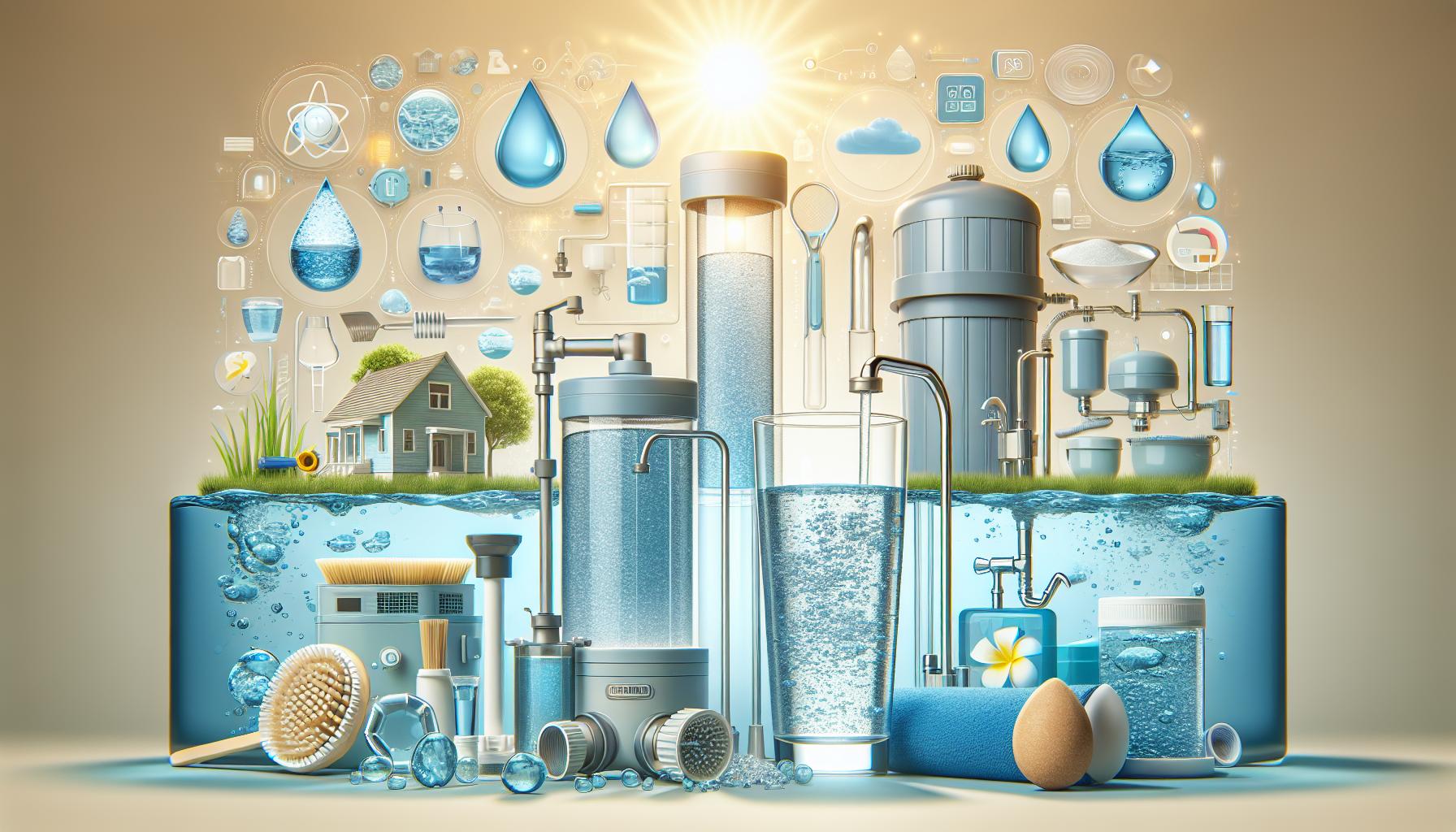
Comparing Boiling with Other Purification Techniques
Boiling water is one of the oldest methods of purification, revered for its simplicity and effectiveness. However, when it comes to removing specific contaminants like chlorine, it’s essential to analyze how boiling stands against other purification techniques. Understanding these differences can help you choose the most suitable method for your needs, especially in fostering safe drinking water.
Boiling vs. Other Techniques
While boiling involves heating water to its boiling point, effectively killing most pathogens, its efficiency can vary when addressing certain chemical impurities such as chlorine. Below are some common water purification methods compared to boiling:
- Filtration: Water filters, especially activated carbon filters, are highly efficient in removing chlorine, sediment, and other impurities. Unlike boiling, which primarily targets microorganisms, filtration systems can improve taste and odor while retaining essential minerals.
- Distillation: This method involves heating water until it vaporizes, then condensing the steam back into a liquid. Distillation is effective in removing chlorine and other volatile compounds, but it can be energy-intensive and time-consuming compared to boiling.
- Reverse Osmosis: Reverse osmosis (RO) systems utilize a semi-permeable membrane to eliminate a wide range of contaminants, including chlorine. While it is a slow process and often requires a dedicated plumbing installation, it provides thorough purification not achievable by boiling alone.
- UV Treatment: Ultraviolet light purifiers effectively eliminate bacteria, viruses, and other pathogens but are less effective against chemical contaminants like chlorine. Their usage often complements boiling or other methods rather than replacing them.
Effects on Chlorine
One of the critical aspects to consider is that boiling does not effectively remove chlorine from water. While the heat causes chlorine to evaporate, the process is slow and might not eliminate all traces. In contrast, methods like filtration or distillation specifically target chlorine and can remove greater percentages more quickly. The table below summarizes the approximate efficiencies of common purification methods in removing chlorine from water:
| Purification Method | Chlorine Removal Efficiency |
|---|---|
| Boiling | Low (Variable) |
| Filtration | High (Up to 99%) |
| Distillation | High (Complete) |
| Reverse Osmosis | High (Up to 98-99%) |
| UV Treatment | None |
This comparison reveals that while boiling is still a valuable method for disinfecting water, it should not be relied upon solely for chlorine removal. By understanding the advantages and limitations of boiling water in relation to other purification techniques, you can ensure that you are making informed decisions about your drinking water’s safety and quality.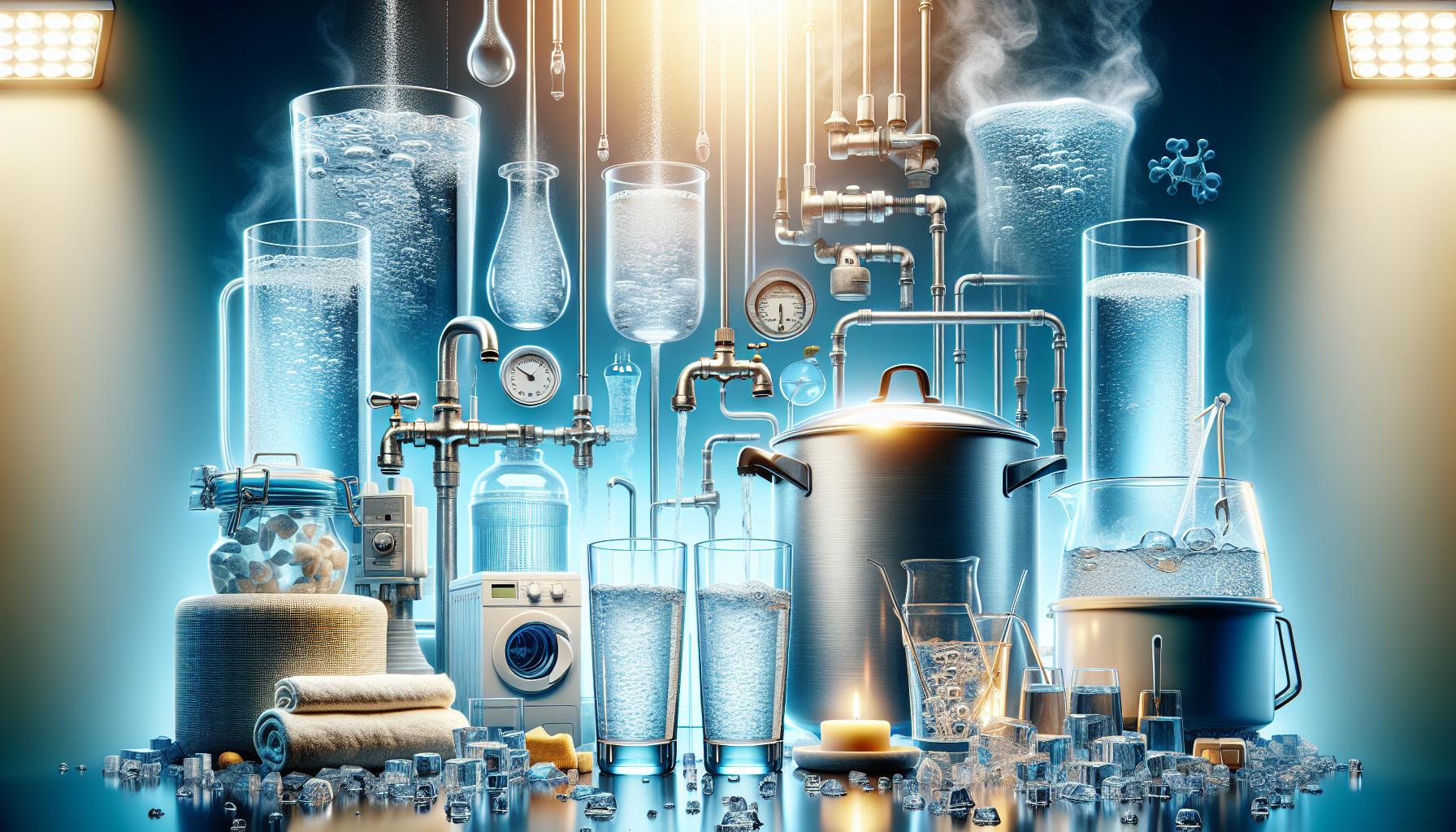
The Role of Heat in Water Treatment: Myth vs. Reality
When it comes to purifying water, heat plays a crucial yet often misunderstood role. Many people assume that boiling water is a cure-all solution for eliminating contaminants and improving safety. However, understanding the specific effects of heat on various substances, particularly chlorine, is essential for safe drinking water. The common belief that boiling water removes chlorine is partially based in reality, yet it does not tell the whole story.
Chlorine, widely used in municipal water systems for its disinfectant properties, does evaporate when heated. However, how effectively it dissipates depends on several factors, including the initial concentration of chlorine, the water temperature, and the duration of boiling. Generally, boiling water for about 15 minutes can significantly reduce chlorine levels, but it’s important to recognize that this method may not fully eliminate all chlorine, especially in larger quantities or when dealing with persistent chloramines.
Understanding the Impact on Contaminants
While heat can aid in reducing chlorine in water, it is not a panacea for all water treatment needs. Boiling is effective against pathogens, but not every harmful substance reacts the same way under heat. For instance, certain heavy metals and chemical pollutants do not evaporate or break down through boiling, necessitating other purification methods such as filtration or activated carbon systems.
To better comprehend how heat affects various contaminants, consider the following:
| Contaminant | Effect of Boiling | Recommended Treatment |
|---|---|---|
| Chlorine | Evaporates with heat | Boiling (15 min+) or letting water sit |
| Chloramines | More resistant to heat | Specialized filters or reverse osmosis |
| Heavy Metals | No effect from boiling | Filtration systems that remove metals |
Practical Applications for Consumers
To make the most of boiling as a purification method, homeowners should consider combining techniques. Boiling can be effective for eliminating microbial contaminants, and then following up with a filtration system can provide comprehensive protection against chemical impurities. Additionally, allowing boiled water to cool before consumption may further aid in reducing any residual chlorine due to evaporation.
In conclusion, while boiling water does help in the removal of chlorine and some microorganisms, relying solely on this method for water purification could leave other harmful contaminants unaddressed. Understanding the realities of how different substances react to heat is critical for those seeking safe and clean drinking water.
Tips for Ensuring Safe and Clean Drinking Water at Home
Ensuring that the water you consume at home is safe and clean is crucial for your health and well-being. Various methods exist for treating water contaminants, such as chlorine, which is commonly used in municipal water systems to kill bacteria and other pathogens. While boiling water is a well-known technique for purification, it’s essential to understand whether this method effectively removes chlorine and how to implement proper water safety practices in your household.
To begin with, boiling water does not effectively eliminate chlorine. When water is boiled, chlorine evaporates, but it takes longer than many might expect. Depending on the concentration of chlorine in the water, it could take anywhere from several minutes to over an hour to remove it completely through boiling alone. Therefore, consider alternative methods for treating your water for chlorine and other impurities to ensure you’re drinking clean water.
Effective Water Purification Methods
Utilize the following methods to enhance the safety of your drinking water:
- Activated Carbon Filters: These filters are excellent for removing chlorine and other volatile organic compounds. Install a certified carbon filter in your kitchen for optimal results.
- Reverse Osmosis Systems: This advanced purification process not only removes chlorine but also a wide array of other contaminants.
- Water Distillation: Distillation effectively removes chlorine and other impurities, providing purified water that can be used for drinking and cooking.
- Chemical Treatment: Use purification tablets or liquid drops that neutralize chlorine effectively, especially when traveling or during emergencies.
Regular Maintenance and Testing
It’s advisable to regularly monitor your home water system to ensure its continued safety. Consider the following steps for ongoing water quality management:
- Test Your Water: Periodically test your water for contaminants such as chlorine, lead, and bacteria. Home testing kits are available for easy use.
- Change Filters Promptly: If using any filtration system, change filters as per the manufacturer’s recommendations to maintain efficacy.
- Inspect Plumbing: Regularly check your pipes for leaks or corrosion, which could signal contamination and lead to unsafe drinking water.
Understanding the question, “Does boiling water take out chlorine? Purification facts” is an essential step in becoming proactive about water safety in your home. By applying these tips, you can ensure that your drinking water remains clean, healthy, and free from harmful contaminants.
Evaluating Water Quality: When to Test for Chlorine Levels
Water quality is essential for health and safety, and understanding when to test for chlorine levels is crucial for ensuring safe drinking water. Chlorine is commonly used as a disinfectant in municipal water systems, but elevated levels can result in both unpleasant tastes and health concerns. Regular monitoring and testing for chlorine levels are important strategies for maintaining water quality, especially in situations where water sources may be compromised or in areas with known chlorination practices.
When to Test for Chlorine Levels
Testing for chlorine levels should be considered in various circumstances:
- After Installation of a New Water System: If you’ve recently installed a water filtration system or have made significant changes to your plumbing, it’s advisable to test the water to ensure chlorine levels are within safe limits.
- Change in Water Taste or Odor: A sudden change in the taste or smell of your tap water can indicate higher chlorine concentrations or other contaminants, signaling the need for testing.
- Periodic Testing for Peace of Mind: Regular testing, even if you haven’t experienced changes in water quality, can help identify any gradual shifts in chlorine levels, especially if you’re using well water or live in an area prone to water quality issues.
- After Health Concerns: If health issues arise that could be linked to water quality, such as gastrointestinal ailments, testing for chlorine and other contaminants should be prioritized.
Methods for Testing Chlorine Levels
There are several effective ways to test chlorine levels in your water. Options include:
| Testing Method | Description |
|---|---|
| DIY Test Kits | These are available online or at local hardware stores, allowing you to conduct basic chlorine testing at home quickly. |
| Laboratory Tests | For the most accurate results, sending a water sample to a certified laboratory can provide comprehensive water quality analysis, including chlorine levels. |
| Test Strips | These handy and easy-to-use strips change color based on chlorine concentration, providing immediate feedback on water quality. |
Regularly assessing chlorine levels through these various methods not only promotes safe drinking water but also empowers homeowners to take control of their water quality. Understanding whether boiling water effectively reduces chlorine levels can be beneficial, as boiling does remove some chlorine but will take time and may not be a complete solution for high levels. Adopting these testing practices ensures you remain informed about your water quality, facilitating timely actions when necessary, a key aspect of responsible home ownership and health management.
Q&A
Does Boiling Water Take Out Chlorine? Purification Facts
Yes, boiling water can effectively remove chlorine. When water is boiled, chlorine evaporates, leaving behind purer water. This process typically takes about 15-20 minutes of boiling for complete chlorine removal.
Chlorine is often used in municipal water supplies to kill bacteria, but its taste and smell can be unpleasant. Boiling not only helps in reducing these attributes but is a simple method available to most households. For more information on water purification techniques, check our related article on water purification methods.
How long do I need to boil water to remove chlorine?
You should boil water for at least 15 minutes to effectively remove chlorine. The longer the water boils, the more chlorine dissipates, ensuring better purification.
Factors such as water temperature and initial chlorine concentration can affect how quickly chlorine evaporates. Always check local guidelines, as some areas may have specific purification recommendations. This boiling process is particularly useful for preparing drinking water, especially in areas with high chlorine levels.
What is the effect of boiling water on chloramines?
Boiling water is less effective at removing chloramines. Unlike chlorine, chloramines do not evaporate easily, requiring more advanced purification methods.
If chloramines are present in your water, consider using activated carbon filters or reverse osmosis systems for effective removal. These methods target chloramines more efficiently than boiling, making them a better long-term solution.
Can I remove chlorine with a water filter?
Yes, many water filters are designed to reduce chlorine and improve water taste. Activated carbon filters are particularly effective at removing both chlorine and chloramines.
Choosing the right filter depends on your water quality and personal preferences. Look for filters certified by organizations like NSF International to ensure they meet safety standards. This allows for an easy and effective way to manage chlorine levels in your drinking water.
Why does boiling water not remove all contaminants?
While boiling water kills bacteria and can eliminate chlorine, it does not remove all contaminants, such as heavy metals or certain chemicals. These substances require different purification methods.
Understanding the limitations of boiling is essential for effective water purification. For broader purification needs, consider combining boiling with other methods like filtration or chemical treatments for improved results.
Does boiling affect the taste of water?
Boiling water can enhance its taste by removing chlorine and other volatile compounds. However, it may not improve the taste if other contaminants remain.
If you’re sensitive to taste and odor in your drinking water, consider filtering or using additional purification methods alongside boiling. This ensures that you enjoy clean and pleasant-tasting water.
What are the best practices for boiling water for purification?
To purify water effectively by boiling, bring it to a rolling boil and maintain that for at least 15 minutes. Allow it to cool before consumption to ensure safety and palatability.
Always use a clean pot and avoid boiling water that has a noticeable contamination or unusual smell. Following these best practices will help you achieve safe drinking water, especially in emergency situations or when traveling.
Wrapping Up
In summary, while boiling water can effectively reduce certain chlorine levels, it isn’t a complete solution for chlorine removal. Understanding the science behind water purification helps you make informed decisions about the water you consume. If you’re looking for a thorough and effective approach to eliminate chlorine and improve your water quality, consider alternatives such as activated carbon filters or reverse osmosis systems. We encourage you to explore these options further and remain proactive in ensuring the quality of your water. Your health and well-being depend on the choices you make, and empowering yourself with knowledge is the first step towards clearer, cleaner water.




